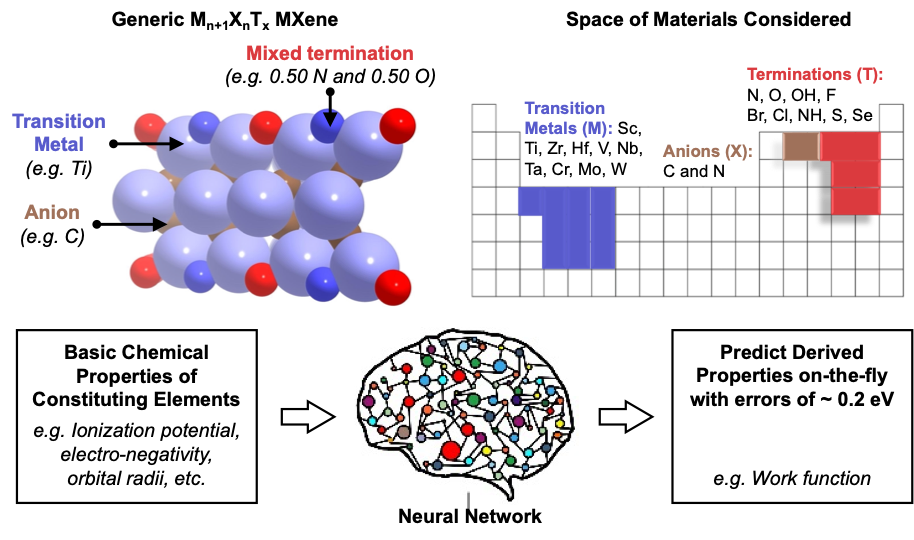(154f) Establishing Structure-Function Relationships in Low-Dimensional Mxenes Using Machine Learning
AIChE Annual Meeting
2022
2022 Annual Meeting
Topical Conference: Material Interfaces as Energy Solutions
Machine Learning in Materials Discovery
Monday, November 14, 2022 - 2:20pm to 2:36pm
To this end, we construct a series of machine learning models that predict functional properties of MXenes like the work function and the adhesion energy of metal overlayers on MXenes from a feature space consisting of physico-chemical properties of the constituting elements. The feature space includes properties like the electronegativity, ionization potential, orbital radii, lattice constants etc that are readily available in databases. Our machine learning models include ordinary linear regression, neural networks, and random forests. To lend physical interpretability to our non-linear models, we also employ symbolic regression. We employ two independent techniques to determine the most important features that govern these structure-property relationships. First, we perform a sensitivity analysis using permutation feature importance. Next, we compute the occurrence probability of different features in the most accurate models.
A 15-feature neural network model emerges as the best performing model and can predict the work function of MXenes from the properties of constituting atoms with a training and testing error of 0.13 eV and 0.25 eV respectively. The sensitivity analyses illustrates that the work function is more strongly dependent on the properties of the surface termination as against properties of metal cation or carbon/nitrogen anion further below the surface. Leveraging insights from our sensitivity analyses, we construct a simpler 5-feature neural network that predicts the work function of MXenes with errors of 0.28 eV, which is comparable to the best performing model. We implement a transfer learning approach that efficiently re-trains the neural network as new data points from additional first principles calculations are added. Experimental measurements of the work function of Ti3C2 terminated with F, O, and N atoms broadly confirm the trends in the work function established through our model.
While non-linear models are necessary to predict the work function of MXenes, the adhesion energies of metal films on MXenes can be robustly estimated using simple linear models. Key features that govern these adhesion energies include the electronegativity of the termination, the strain on the metal film, and the work function of the support. Model predicted adhesion energies are estimated with errors of 0.02 eV/A^2. These adhesion energies are used as inputs to determine the morphology of low dimensional metal/support heterostructures through a Winterbottom construction. Taken together, our study highlights the power of machine learning methods towards predicting the functional properties of two-dimensional materials from a feature space consisting of readily available physico-chemical properties. Furthermore, machine learning methods can engender physical-insights that help rationalize such structure-property relations.
